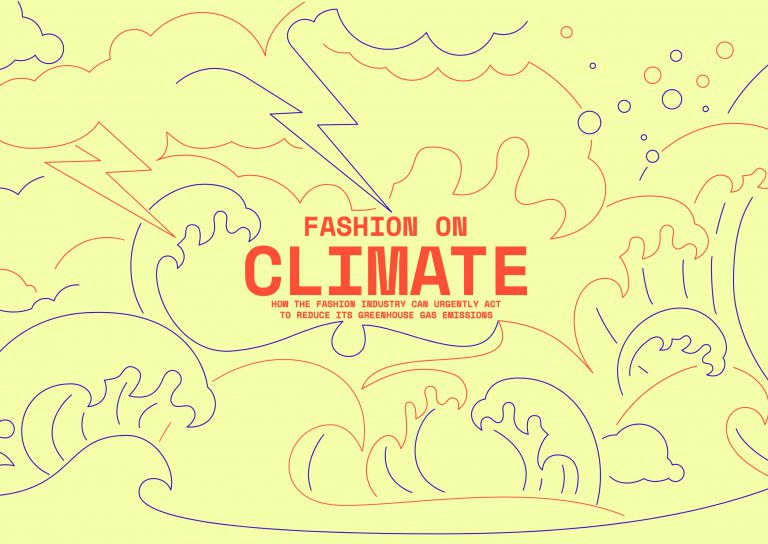What is Fashion on Climate?
Fashion needs to act on climate. If we continue on our current path, we will miss our 2030 emissions reduction targets by 50%, leading to accelerated global warming. From rising sea levels, to extreme rainfall and more powerful heatwaves, the consequences of climate change can no longer be ignored, either by society or the fashion industry, which will see many impacts on its operations in the years ahead.
Fashion on Climate presents the fashion industry’s impact on climate change. With analysis on the GHG emissions, it outlines areas in which industry players can focus their efforts to meet climate targets.
It offers insight into the industry’s potential for decarbonisation and calls on all stakeholders, including brands, retailers, manufacturers, citizens, investors, and policy makers to play their part in setting the fashion industry on the 1.5-degree pathway. Only by daring to change, collaborate and embrace new ways of operating can we, together, transform the industry and prevent further global warming.
Together with our Strategic Knowledge Partner, McKinsey & Company, we create thematic deep-dives focused on specific sustainability topics. To realise our vision and support industry sustainability efforts, we develop common industry fact-bases and demystify complexities to guide and mobilise the industry to take bold action on sustainability.
Reports
The Fashion CEO Agenda 2024: Special Edition
Developed for fashion leaders, this special edition Fashion CEO Agenda presents five pivotal opportunities for fashion executives and the industry at large to unlock transformative impact for people and planet.
Interwoven: Fashion Storytelling in the time of a Climate Crisis
The 2023 Next Gen Assembly cohort came together from across the globe and disciplines to reflect on what change within the fashion industry can look like.
Next Gen Manifesto
2023 Next Gen Assembly Members Manifesto covering storytelling for a transformative change in the fashion system.
Co-authored with our Strategic Knowledge Partner
Contact us
Do you want to help us accelerate impact in the fashion industry? We welcome further cooperation with other industry organisations, brands, retailers, investors, grantors, solution providers, academia and more. We invite you to share thoughts with us.


